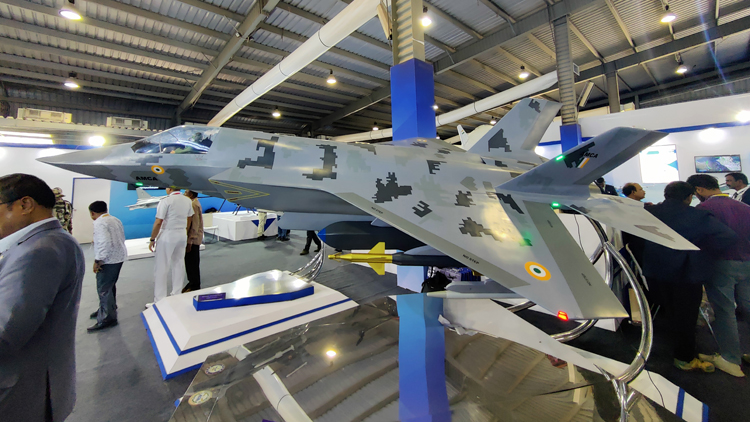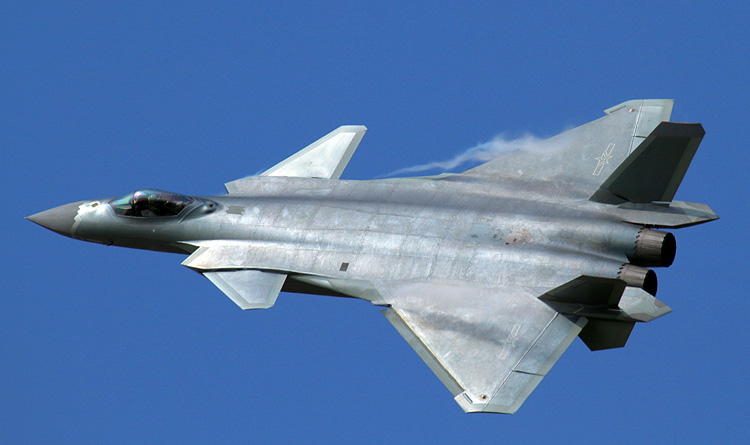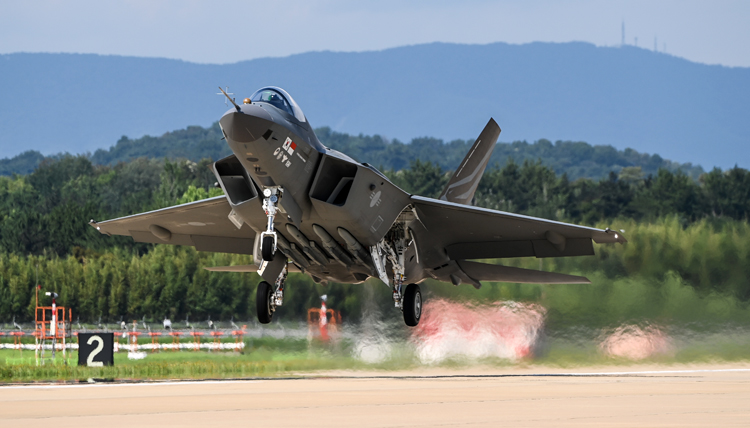INDIAN ARMED FORCES CHIEFS ON OUR RELENTLESS AND FOCUSED PUBLISHING EFFORTS

The insightful articles, inspiring narrations and analytical perspectives presented by the Editorial Team, establish an alluring connect with the reader. My compliments and best wishes to SP Guide Publications.

"Over the past 60 years, the growth of SP Guide Publications has mirrored the rising stature of Indian Navy. Its well-researched and informative magazines on Defence and Aerospace sector have served to shape an educated opinion of our military personnel, policy makers and the public alike. I wish SP's Publication team continued success, fair winds and following seas in all future endeavour!"

Since, its inception in 1964, SP Guide Publications has consistently demonstrated commitment to high-quality journalism in the aerospace and defence sectors, earning a well-deserved reputation as Asia's largest media house in this domain. I wish SP Guide Publications continued success in its pursuit of excellence.
India's AMCA
The AMCA programme was launched in 2010 and is currently the only 5th generation fighter under development in India, aimed at performing multiple missions including air supremacy, ground strike, suppression of enemy air defence (SEAD), and electronic warfare (EW) missions
 |
The Author is Former Director General of Information Systems and A Special Forces Veteran, Indian Army |

On March 7, 2024, the Cabinet Committee on Security (CCS) approved the project to develop five prototypes of the 5th-Generation Advanced Medium Combat Aircraft (AMCA) at a cost of ₹15,000 crore ($1.8 billion) for the Indian Air Force (IAF) and the Indian Navy (IN). The Aeronautical Development Agency (ADA) under the Ministry of Defence (MoD) is responsible for designing the AMCA. A Special Purpose Vehicle (SPV) consisting of ADA, Hindustan Aeronautics Limited (HAL) and private company/companies is being formed for the development and production of AMCA. The private sector will reportedly hold the majority stake in this public-private enterprise.
The AMCA programme was earlier known as the Medium Combat Aircraft (MCA) programme. It began as a parallel programme to the Indo-Russia Sukhoi/HAL Fifth Generation Fighter Aircraft (FGFA). The AMCA programme was launched in 2010. The AMCA is currently the only 5th generation fighter under development in India. Feasibility study of AMCA and the preliminary design stage have been completed, and the project entered the detailed design phase in February 2019. The AMCA design is to optimise low radar cross section and super cruise capability.
On March 7, 2024, the Cabinet Committee on Security (CCS) approved the project to develop five prototypes of the 5th-Generation Advanced Medium Combat Aircraft (AMCA) at a cost of ₹15,000 crore ($1.8 billion) for the Indian Air Force (IAF) and the Indian Navy (IN)
The AMCA is aimed at performing multiple missions including air supremacy, ground strike, suppression of enemy air defence (SEAD) and electronic warfare (EW) missions; to support and supplant the IAF's Sukhoi Su-30 MKI air superiority fighter jets, which are the backbone of the IAF fighter aircraft fleet. The Mark-1 variant of single-seat, twin-engine, all-weather, 25-tonne AMCA is to be 5th generation while the Mark-2 variant is to have the 6th generation technologies upgrades to stay relevant, as well as a more powerful engine. A total of five prototypes are to be built. According to media reports, the IAF plans to procure at least 125 AMCA in Mark-1 and Mark-2 configurations.
In January 2021, HAL Chairman R. Madhavan stated, "The prototype of the aircraft is likely to be ready by 2026 and its production could start by 2030." However, during DefExpo-2022, A.K. Ghosh, Project Director of AMCA, stated, "Once the project sanction is received, the first prototype can be rolled out in three years and the first flight in one to one and half years after that."
In November 2022, the Chief of the Air Staff, Air Chief Marshal V.R. Chaudhari, advised "prudence"; foreign tie-ups as a fallback for developing "alternative systems and sensors" in case indigenous development slips the timeline. Eventually, on February 14, 2023, DRDO Chairman Samir Kamat said the first flight of the AMCA "may take seven years and the induction can be done in ten years from now." Kamat reiterated that the induction target for the AMCA will be the year 2035.
The AMCA Mk-1 is to be powered by the 98 kN GE F414 engine, with the Mk-2 variant to feature 6th generation technologies and a more powerful engine, developed in collaboration with a yet-to-be-chosen foreign partner
AMCA Mk-1 is to be powered by the 98 kN GE F414 engine (instead of a 110 kN engine planned when the AMCA was conceived), whereas, the more advanced and powerful engine for the AMCA Mk-2 is to be developed in collaboration with a yet-to-be-chosen foreign partner. This has raised doubts whether the projected timeline for induction by 2035 can be met. There is also speculation in media that the AMCA Mk-1 may be a 4.5-generation fighter, not 5th-generation because; the GE-414 engine lacks super-cruise, super-maneuverability and sensor fusion (essential for a 5th-generation fighter) and the AMCA Mk-1 will feature only limited stealth without rear aspect stealth – neither RF nor IR.

According to new reports, the government is looking to boost the AMCA programme with private sector collaboration in light of the fact that China plans 1,000 x J-20s/6th-Generation fighter jets by 2034. The J-20 is a single-seater, multi-role, all-weather 5th-generation stealth fighter aircraft, which flew for the first time January 11, 2011 and officially entered service in 2017. The PLA Air Force (PLAAF) already has some 50 x J-20 fighter jets in its fleet. The goal is to take the number to 400 by 2027. In addition, China is already moving to develop 6th-generation fighter jets, with the concept shared on social media in February 2023.
The government is looking to boost the AMCA programme with private sector collaboration, as China plans to deploy 1,000 J-20s/6th-Generation fighter jets by 2034
With the induction of AMCA planned for 2035 as of now, catching up with China appears to be more than a herculean task, bordering on impossibility. It would have been better if the CCS had approved development of the prototype at least five years back, given that the AMCA programme was launched 14 years earlier - in 2010.
The MoD has now issued an Expression of Interest (EoI) for manufacture of the AMCA to exact response from the industry. It is assumed that names of the companies participating in the SPV will be announced in the next six months or so. The SPV consortium is to be responsible for assembling and maintaining the AMCA jet once it enters production expected around 2035.

According to news reports of July 12, 2024, South Korea's KF-21 'Boramae' multi-role fighter aircraft, developed under the Defense Acquisition Program Administration (DAPA), entered production in record time. With automated manufacturing by the Korea Aerospace Industries (KAI), after a successful maiden manufacturing run, the KF-21 fighter is expected to enter mass production in 2026. Automated manufacturing would also boost exports. The KF-21 is an advanced supersonic fighter with which South Korea is preparing to join the elite group of nations like the US, Russia, and China with a 5th-generation fighter jet.
Considering the timelines and the capability gap vis-à-vis China, the government should consider the advice by the CAS, Air Chief Marshal V.R. Chaudhari regarding foreign tie-ups as a fallback for developing "alternative systems and sensors. In fact, given the Indo-Russian collaborative venture of BrahMos supersonic missiles, plus reported negotiations with Russia to co-produce Su-30 jets under 'Make in India', it would be wise to explore co-development of 6th-generation fighter jet technologies in collaboration with Russia. Such collaboration with France is unlikely to work out with the French company Dassault Aviation already putting spanners in terms of Transfer of Technology (ToT) for India's upcoming Multi-Role Fighter Aircraft (MFRA) procurement. Expecting ToT from western nations should be passé given their past history.





